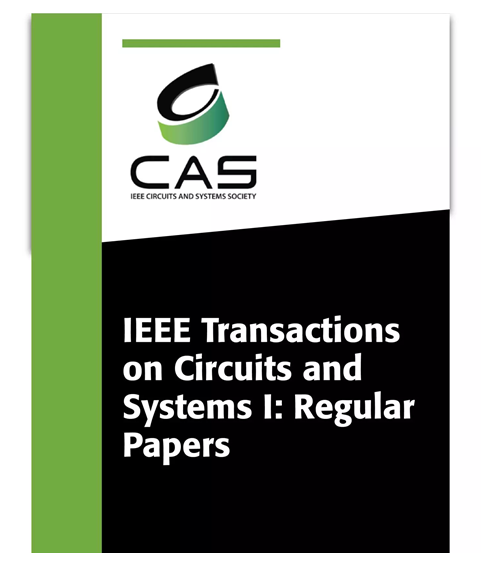采用辅助级多单周非线性控制(MSCNLC)的Buck变换器实现快速负载瞬态响应
IF 5.2
1区 工程技术
Q1 ENGINEERING, ELECTRICAL & ELECTRONIC
IEEE Transactions on Circuits and Systems I: Regular Papers
Pub Date : 2024-09-16
DOI:10.1109/TCSI.2024.3454602
引用次数: 0
摘要
近年来,数字集成电路具有大电流回转特性和紧张的供电电压裕度,对供电稳压器的需求越来越大。本文提出了一种增强型DC-DC降压变换器,该变换器由一个低频主变换器和一个常关快开关次级并联工作组成。变换器的主级采用仿真电流模式迟滞控制。对于辅助暂态抑制阶段,提出了一种称为多单周期非线性控制的非线性控制方案。所提出的增强型调节器在不影响变换器整体效率的情况下改善了负载暂态响应,打破了众所周知的效率与动态响应之间的权衡。高功率效率的主级工作在$F_{sw}=500$ kHz提供稳态直流调节电压。辅助级采用100nH的小型电感,仅在检测到负载暂态事件时才启动,提供快速的负载响应,最大限度地减少输出电压偏差。通过输出电容电荷跟踪电路检测负载瞬态事件,有效地使辅助级在瞬态响应过程中成为快速的电流控流源。buck变换器设计为$V_{IN} =3$ V-5.5V, $V_{OUT} =0.5$ V-1.1V和$I_{LOAD} =0.5$ A-8A。采用$0.18~\mu $ m的BCD工艺制备。测量结果表明,启用MSCNLC后,负载步进为2.5A的升压响应和降压响应的欠调和过调分别降至27mV和58mV,幅度接近2倍。恢复时间提高了约1.7倍。本文章由计算机程序翻译,如有差异,请以英文原文为准。
A Buck Converter Using Auxiliary-Stage With Multiple-Single-Cycle Non-Linear Control (MSCNLC) for Fast Load Transient Response
Recently, digital ICs with high current slewing characteristics and tight supply voltage margin put increasing demand on the supply regulators. In this paper, an augmented DC-DC buck converter consisting of a lower-frequency main converter and a normally-off fast-switching secondary stage operating in parallel is proposed. The main-stage of the converter uses emulated-current-mode hysteretic control. For the auxiliary transient-suppression stage a nonlinear control scheme termed multiple-single-cycle nonlinear control (MSCNLC) is developed. The proposed augmented regulator improves the load transient response without compromising the overall efficiency of the converter, breaking the well-known efficiency vs. dynamic response trade-off. The high power-efficiency main-stage operating at
$F_{sw}=500$
kHz provides the steady-state DC regulation voltage. The auxiliary-stage adopts a small inductor of 100nH and is only activated when load transient events are detected, providing fast load response, minimizing output voltage deviation. The load transient events are detected through an output capacitor charge tracking circuit, which effectively makes the auxiliary-stage a fast Current-Controlled-Current-Source during transient response. The buck converter is designed for
$V_{IN} =3$
V-5.5V,
$V_{OUT} =0.5$
V-1.1V and
$I_{LOAD} =0.5$
A-8A. It is fabricated in
$0.18~\mu $
m BCD process. The measurement results show that with MSCNLC enabled, the undershoot and overshoot is reduced to 27mV and 58mV during the step-up and step-down response with 2.5A load step by a factor of close to 2, respectively. The recovery time is improved by ~1.7x.
求助全文
通过发布文献求助,成功后即可免费获取论文全文。
去求助
来源期刊
CiteScore
9.80
自引率
11.80%
发文量
441
审稿时长
2 months
期刊介绍:
TCAS I publishes regular papers in the field specified by the theory, analysis, design, and practical implementations of circuits, and the application of circuit techniques to systems and to signal processing. Included is the whole spectrum from basic scientific theory to industrial applications. The field of interest covered includes: - Circuits: Analog, Digital and Mixed Signal Circuits and Systems - Nonlinear Circuits and Systems, Integrated Sensors, MEMS and Systems on Chip, Nanoscale Circuits and Systems, Optoelectronic - Circuits and Systems, Power Electronics and Systems - Software for Analog-and-Logic Circuits and Systems - Control aspects of Circuits and Systems.

 求助内容:
求助内容: 应助结果提醒方式:
应助结果提醒方式:


